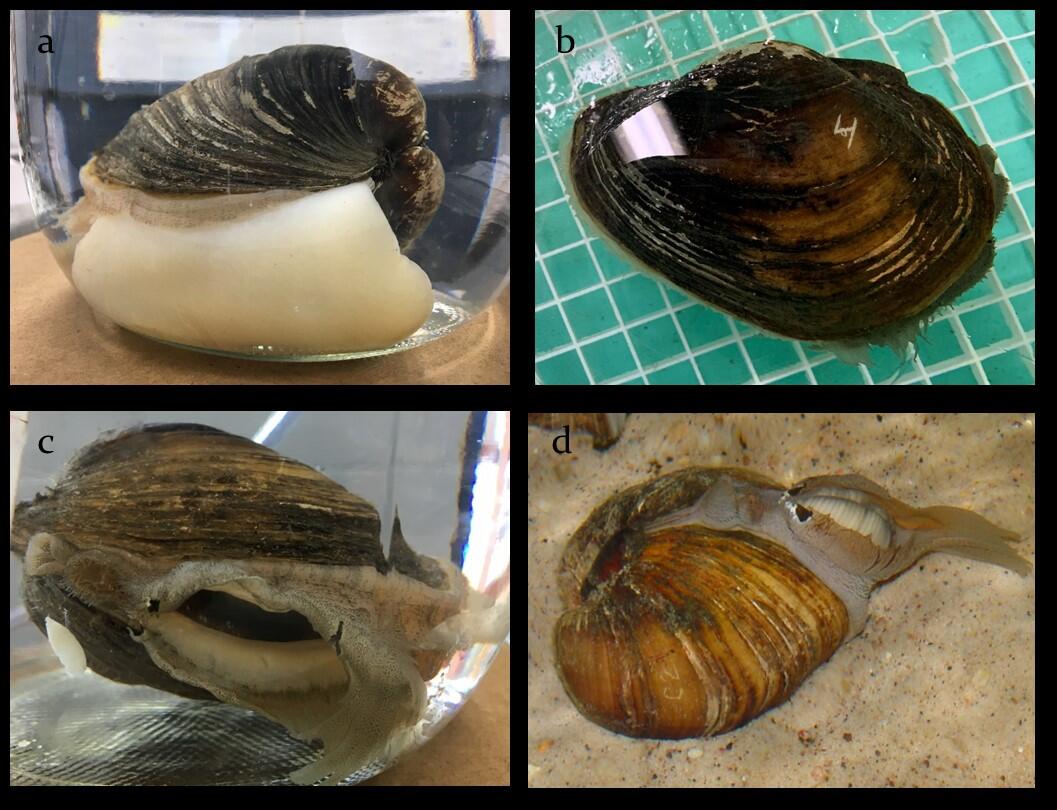Potential reproductive effects of the lampricides TFM and TFM:1% Niclosamide on native freshwater mussels
Conservation and Restoration of Native Freshwater Mussels
There has been growing concern by Federal and State agencies in recent years over the risk that lampricide applications may have on non-target organisms. Due to their highly imperiled status, sedentary behavior, and bottom dwelling nature, native freshwater mussels are a group of organisms that may be adversely affected by lampricides. Several aquatic contaminants have been shown to cause a premature release of larvae (glochidia) from female mussels. If these larvae are released before they mature, there may be corresponding negative effects on the recruitment of juvenile mussels into the population. USGS scientists are exploring the potential for lampricides to adversely affect reproduction in native mussels.

The goal of this project is to document the presence or absence of reproductive effects on native mussels caused by exposure to the lampricides TFM and TFM:1% Niclosamide. To accomplish this, there are four main objectives:
- Determine the acute toxicity of TFM and TFM:1% Niclosamide to glochidia from the pocketbook mussel (Lampsilis cardium).
- Compare the toxicity of glochidia (from objective 1 above) and glochidia that still reside within the marsupial gills of adult L. cardium mussels to TFM and TFM:1% Niclosamide
- Determine if the age of glochidia influences toxicity in L. cardium exposed to TFM and TFM:1% Niclosamide
- Evaluate a suite of potential reproductive effects of TFM and TFM:1% Niclosamide in gravid adult L. cardium mussels.

Conservation and Restoration of Native Freshwater Mussels
There has been growing concern by Federal and State agencies in recent years over the risk that lampricide applications may have on non-target organisms. Due to their highly imperiled status, sedentary behavior, and bottom dwelling nature, native freshwater mussels are a group of organisms that may be adversely affected by lampricides. Several aquatic contaminants have been shown to cause a premature release of larvae (glochidia) from female mussels. If these larvae are released before they mature, there may be corresponding negative effects on the recruitment of juvenile mussels into the population. USGS scientists are exploring the potential for lampricides to adversely affect reproduction in native mussels.

The goal of this project is to document the presence or absence of reproductive effects on native mussels caused by exposure to the lampricides TFM and TFM:1% Niclosamide. To accomplish this, there are four main objectives:
- Determine the acute toxicity of TFM and TFM:1% Niclosamide to glochidia from the pocketbook mussel (Lampsilis cardium).
- Compare the toxicity of glochidia (from objective 1 above) and glochidia that still reside within the marsupial gills of adult L. cardium mussels to TFM and TFM:1% Niclosamide
- Determine if the age of glochidia influences toxicity in L. cardium exposed to TFM and TFM:1% Niclosamide
- Evaluate a suite of potential reproductive effects of TFM and TFM:1% Niclosamide in gravid adult L. cardium mussels.


